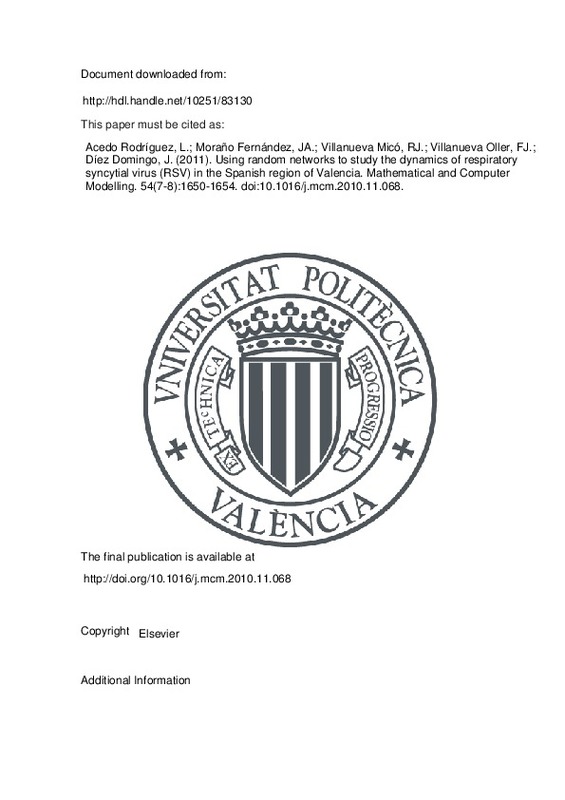JavaScript is disabled for your browser. Some features of this site may not work without it.
Buscar en RiuNet
Listar
Mi cuenta
Estadísticas
Ayuda RiuNet
Admin. UPV
Desde el lunes 3 y hasta el jueves 20 de marzo, RiuNet funcionará en modo de solo lectura a causa de su actualización a una nueva versión.
Using random networks to study the dynamics of respiratory syncytial virus (RSV) in the Spanish region of Valencia
Mostrar el registro completo del ítem
Acedo Rodríguez, L.; Moraño Fernández, JA.; Villanueva Micó, RJ.; Villanueva Oller, FJ.; Díez Domingo, J. (2011). Using random networks to study the dynamics of respiratory syncytial virus (RSV) in the Spanish region of Valencia. Mathematical and Computer Modelling. 54(7-8):1650-1654. https://doi.org/10.1016/j.mcm.2010.11.068
Por favor, use este identificador para citar o enlazar este ítem: http://hdl.handle.net/10251/83130
Ficheros en el ítem
Metadatos del ítem
| Título: | Using random networks to study the dynamics of respiratory syncytial virus (RSV) in the Spanish region of Valencia | |
| Autor: | Villanueva Oller, Francisco Javier Díez Domingo, Javier | |
| Entidad UPV: |
|
|
| Fecha difusión: |
|
|
| Resumen: |
[EN] Seasonal fluctuations in the incidence of several respiratory infections are a feature of epidemiological surveys all around the world. This phenomenon is characteristic of influenza and respiratory syncytial virus ...[+]
|
|
| Palabras clave: |
|
|
| Derechos de uso: | Reserva de todos los derechos | |
| Fuente: |
|
|
| DOI: |
|
|
| Editorial: |
|
|
| Versión del editor: | http://doi.org/10.1016/j.mcm.2010.11.068 | |
| Código del Proyecto: |
|
|
| Agradecimientos: |
|
|
| Tipo: |
|







![[Cerrado]](/themes/UPV/images/candado.png)


